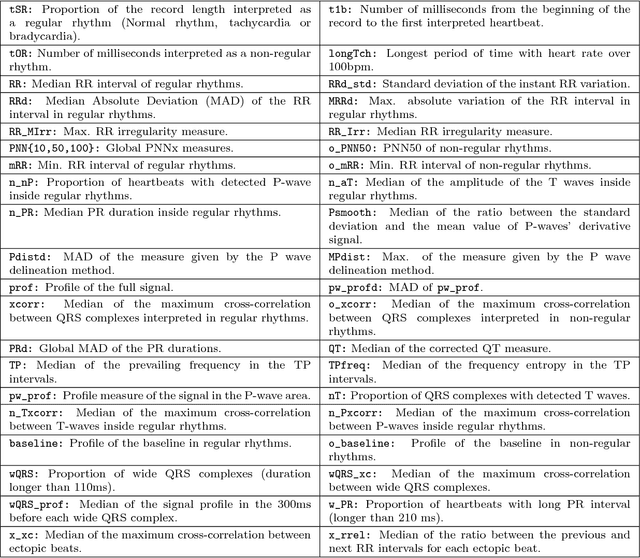Abductive reasoning as the basis to reproduce expert criteria in ECG Atrial Fibrillation identification
Paper and Code
Feb 16, 2018



Objective: This work aims at providing a new method for the automatic detection of atrial fibrillation, other arrhythmia and noise on short single lead ECG signals, emphasizing the importance of the interpretability of the classification results. Approach: A morphological and rhythm description of the cardiac behavior is obtained by a knowledge-based interpretation of the signal using the \textit{Construe} abductive framework. Then, a set of meaningful features are extracted for each individual heartbeat and as a summary of the full record. The feature distributions were used to elucidate the expert criteria underlying the labeling of the 2017 Physionet/CinC Challenge dataset, enabling a manual partial relabeling to improve the consistency of the classification rules. Finally, state-of-the-art machine learning methods are combined to provide an answer on the basis of the feature values. Main results: The proposal tied for the first place in the official stage of the Challenge, with a combined $F_1$ score of 0.83, and was even improved in the follow-up stage to 0.85 with a significant simplification of the model. Significance: This approach demonstrates the potential of \textit{Construe} to provide robust and valuable descriptions of temporal data even with significant amounts of noise and artifacts. Also, we discuss the importance of a consistent classification criteria in manually labeled training datasets, and the fundamental advantages of knowledge-based approaches to formalize and validate that criteria.
 Add to Chrome
Add to Chrome Add to Firefox
Add to Firefox Add to Edge
Add to Edge